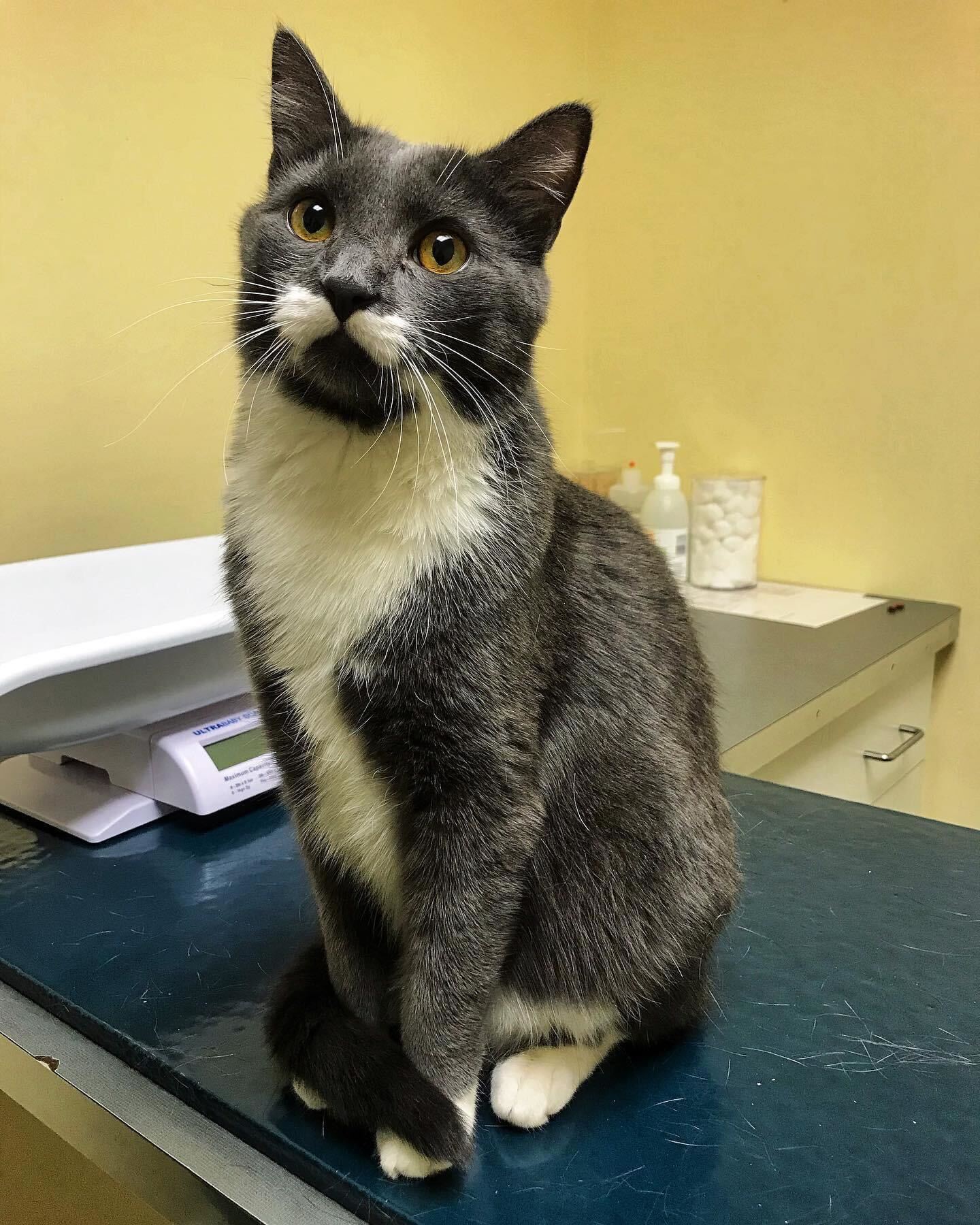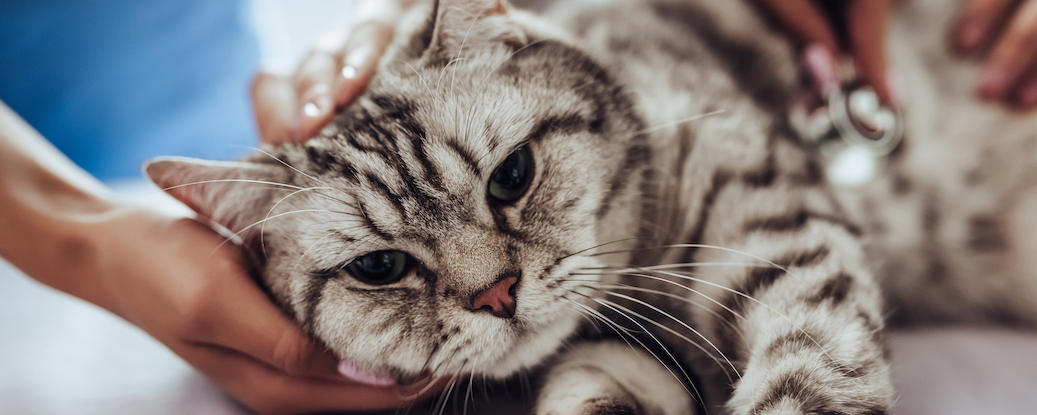Anyone who has ever wrestled an anxious cat into a carrier—or heard their feline pal hissing at the doctor like she’s an extra from The Exorcist—knows that vet visits can be a bit stressful for your kitty. But that’s no reason to neglect proper care.
Think of your vet as your partner when it comes to helping your furry friend live their best life. But how often does your cat really need to go to the vet? Let’s scratch the surface of what you need to know.
How often should I take my cat to the vet?
For most of your cat’s life, at minimum, they will need to see the vet for an annual wellness exam. Depending on your cat’s age, the frequency of these vet visits will vary.
Let’s break it down, shall we?
How often should I take my kitten to the vet?
When you’re caring for a kitten, you should plan on visiting the vet more frequently, especially when your kitten is very young. Because kittens grow rapidly and need important vaccines while they’re little, your kitten will need to see the vet more often than an adult cat. This is particularly true during your kitten’s first 16 weeks of life.
If you’re caring for a newborn kitten, it’s a good idea to take them to the vet for a checkup to make sure that they’re healthy overall. Even seemingly small issues, like diarrhea, can progress quickly and be life-threatening for newborn kittens. A vet can help you to identify and treat any potential issues early on.
Young kittens need to see the vet to get their first vaccines when they’re about eight weeks old. The kitten vaccine series involves multiple appointments and vaccines, spread out over several months. Your vet may schedule two to three appointments, about three to four weeks apart. By the time your kitten is about 16 to 20 weeks old, they will be fully vaccinated and ready to party.
During those initial appointments, your vet will monitor your kitten’s weight and make sure that their growth is progressing normally. Your vet will also discuss getting your cat spayed or neutered, common and sage procedures that have clear health benefits.
The right age for this surgery will vary depending on your kitten as well as your vet’s policies. Most kitties are spayed or neutered when they’re around six months old, give or take.

How often should I take my adult cat to the vet?
Many people believe that because cats are “lower maintenance” than their canine counterparts, and they don’t need to go to the vet unless they’re sick. Wrong.
Just like dogs, healthy adult cats should plan on going to the vet at least once a year for an annual check up.
During that appointment, your doctor will perform a physical exam to evaluate your cat’s overall health and check for health issues ranging from obesity to fleas. Your vet will provide some preventative care recommendations, like diet and nutrition advice, and will make sure that your kitty is happy and healthy. Your cat will also get any necessary booster shots.
Your vet will also evaluate your kitty’s dental health. Depending on the condition of your cat’s teeth, your vet might recommend a dental cleaning. The frequency of these cleanings varies depending on your cat. It’s a good idea to schedule annual cleanings, but defer to your vet for advice specific to your cat’s needs.
While an annual wellness check is enough for most adult cats, if your feline friend has certain health conditions, you may need to schedule more frequent appointments. Issues like diabetes, kidney disease, and hyperthyroidism need to be managed and monitored. If your kitty is hit with one of these diagnoses, your vet may have you bring your cat in more often for blood tests to monitor your cat’s condition.
Keep in mind, if you have an outdoor cat, you might end up taking your cat to the vet more often, since these roaming felines are more prone to fleas, accidents, and illnesses. It’s a cat-scratch-cat world out there…
How often should I take my senior cat to the vet?
As cats enter their senior years, they’re increasingly at risk of developing health issues like kidney disease. Most vets recommend that once your cat reaches 10 years of age, you should schedule senior wellness exams every six months.
These senior cat visits may involve just a physical exam, or your vet might order blood work and other diagnostic tests. The goal of these appointments is to catch any health issues early on, so you can start treating them right away. If your cat is diagnosed with a serious health issue that needs to be closely monitored, you might need to schedule vet appointments more often.
How can I keep my cat calm at the vet?
Vet trips can be stressful for cats, but there are multiple ways you can help. Most cats aren’t fans of car rides, so if possible, use a vet who’s located close to your house to cut down on travel time. If you have multiple kitties who are buddies, see if you can schedule their appointments together so they have one another for snuggles and comfort.
Once you’re at the vet, try to find a quiet spot in the waiting room where your cat can’t see other pets. You might want to cover one side of the carrier with a light blanket or towel (just make sure that your kitty can still get plenty of air). Looking for a cat-friendly vet that understands a feline’s needs? Check out this list of cat-friendly practices.
You can also try using cat pheromones to help calm your kitty. Pheromones promote calm cats, and they’re available in sprays that you can squirt around the interior of your cat carrier.

When should I take my cat on an emergency trip to the vet?
If your cat is experiencing a health issue outside of your vet’s operating hours, you might be in a tricky spot: Rush to the emergency vet, or wait it out?
There are some symptoms that indicate your cat is having a medical emergency and needs to be seen ASAP:
- Difficulty breathing and labored breathing
- Collapse or extreme lethargy
- Seizures
- Many vomiting episodes that occur within a few hours
- Abdominal pain lasting more than 30 minutes
- The inability to urinate
- Panting or heatstroke
- Paralysis in a limb
- Crying when touched, which indicates extreme pain
You should also always seek out emergency treatment for your cat if you know your kitty has been in an accident or trauma, or if your kitty has eaten something toxic.
If you’re not sure if your cat needs an emergency trip to the vet, you can call your vet for advice. If your vet is closed and no on-call vet is available, call the local pet hospital for advice. Describe your cat’s symptoms in detail, including the amount of time that your cat has been experiencing those symptoms.
How much does a cat vet visit cost?
The cost of a vet visit will depend on the services your cat needs, as well as your specific vet office’s rates. With that in mind, the table below includes the common price ranges of some common services a visit might involve.
| Cat veterinary service | Common cost range |
|---|---|
| Basic vet visit | $45 to $55 |
| More extensive physical exam | $90 to $200 |
| Ear care appointment and medication | $120 to $150 |
| Fecal exam | $25 to $40 |
| Dental care | $200 to $1,000 |
| Spaying and neutering | $250 to $2,000 |
| Geriatric tests | $85 to $110 |
| Vaccinations: Rabies, FVRCP, and Feline Leukemia | $25 to $50 each |
Emergency services and diagnostic testing can quickly increase the price of your vet visit. If you’re looking to go into greater detail on the cost of common veterinary treatments, diagnostics and procedures, read more here.
Concerned about the cost of a visit? Don’t be shy: Inquire with the receptionist about prices ahead of time, or ask your vet for prices of services like blood work or diagnostic tests before they’re performed.
If you’re feeling a bit overwhelmed by all of these veterinary care costs, we understand! Keeping your fur fam healthy can be expensive.
We never want the fear of maxing out your credit card to be the reason you dread a vet visit.
Pet health insurance for cats can be an economical way to recoup many expenses you might encounter at the vet. For instance, Lemonade offers a Preventative, Preventative+, and a Puppy/Kitten Preventative package. Depending on your pet’s age, this package covers things like spaying/neutering, vaccinations, microchipping, and flea and tick treatments.
And your base Lemonade policy will be useful in the case of unexpected accidents and illnesses, including big ticket treatments that you might otherwise not be able to afford.
It’s always a good idea to get your cat signed up early, before they develop any pre-existing conditions! Click below to get started—it only takes a few minutes.
Before we take a cat nap…
Whether you’re thinking of adopting a cat, or already have a feline family member, understanding how often your cat will need to go to the vet can help you to plan your schedule and your budget. Even though cats are historically considered “low maintenance” pets, caring for a cat can get expensive, especially if your kitty has underlying health issues.
Pet health insurance can be a great way to ensure you’re financially prepared to pay for your cat’s vet appointments, learn more about what pet insurance covers to get the scoop.





